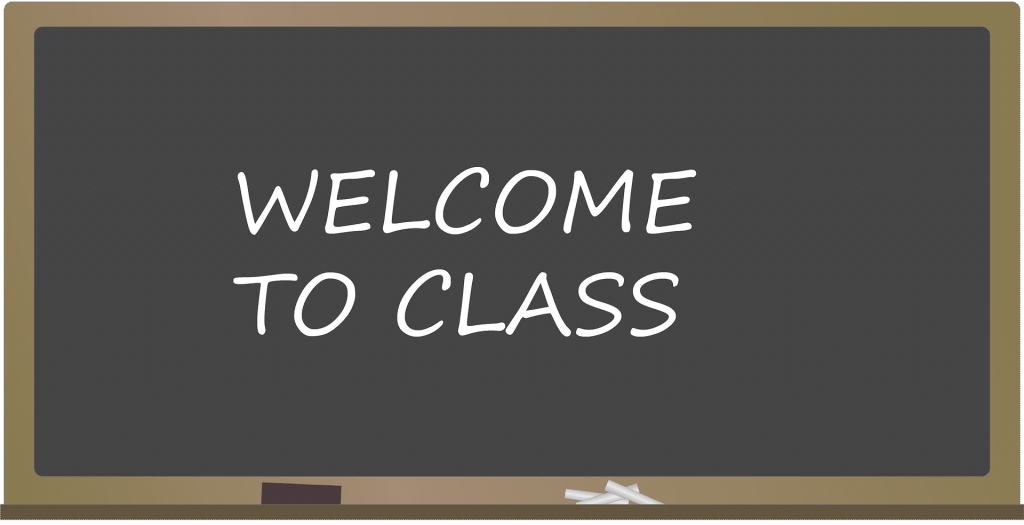-
FYC Goals: From Theory to Application

From Theory to Application . . . The pendulum is swinging, and with each tick of the clock, I find myself getting closer and closer to that first moment of comprehension — the one where I face twenty-six incoming freshman students that are as apprehensive of taking a writing course as I am teaching it for the first time. Did I design my curriculum to best meet the needs of my students? Are my learning outcomes in line with the course objectives? Are my assignment guidelines structured in a format that facilitates both clarity and cohesiveness? Is the sequencing and scaffolding design of the semester’s assignments logically chronological? As Teresa Redd references, “Talkin bout Fire Don’t Boil the Pot” (146). In other words, studying composition pedagogy may prepare me for understanding the needs of students, and may offer direction on how to best design the course, but all of this does not TEACH the students WRITING; hence, this is where the professor’s role comes into play.
After months of trying to absorb as much as I can researching different theoretical pedagogical perspectives, I now begin the process of mapping out assignments while considering the fundamental takeaways I feel are most critical to incorporate. Several takeaways stand out to me in the readings for this week and are highlighted below:

Audience Matters . . . Diversity in Writing. - Diversity in writing – “To develop students’ rhetorical knowledge and sense of authorship so that they can adapt writing to different purposes, audiences, and contexts” (Redd 147).
Coming from an occupational field outside of academia, I genuinely understand the need for students to be able to transfer writing skills from an academic to an applied setting. Learning how to write for audiences outside of the college classroom is something all students should be exposed to. Upon graduation, students may be tasked with various genres of writing: professional emails, corporate marketing, newspaper articles, social media postings, and for some, creative writing.

Writing for knowledge . . . - We write to learn – “ . . . writing enables us to think in ways that are virtually impossible without writing because we can reflect upon our thoughts more easily when we can see and preserve them” (Redd 148).
I have seen this scenario play out daily while working in the KSU writing center. Sometimes, students will come into the writing center and feel overwhelmed by the task at hand. In this situation, after carefully reviewing the professor’s assignment guidelines, I will begin the freewriting and/or brainstorming process. Often times, students will start to develop a structure or pattern based solely upon what they have written in these brainstorming sessions. I associate this process directly with “we write to learn” — we don’t know what we know until we write it. Furthermore, students recognize the fact they DO know something about what they would like to write.

Identifying your process is key . . . - Writing is a process – “We cannot truly teach writing without teaching the process of writing, for it is the development of flexible processes that will enable students to fulfill the wide range of writing tasks they will encounter in the university and beyond” (Redd 149).
As I have previously discussed in one of my recent blog posts, I believe teaching the processes of writing is very paramount in students’ success of not just freshman-level English composition, but I believe it is fundamental in helping students write BEYOND the current assignment. I met with a student just yesterday that has always enjoyed writing and has had great success in writing. For some reason, the current assignment was overwhelming them to the point they had writer’s block. I immediately began talking to the student to try and identify “processes” they had relied upon and typically used throughout the years that had seemed to work. Within a matter of a few moments, the student was writing again, which wasn’t due to anything I said other than encouraging them to draw upon their “processes.”

Genres of Writing . . . - Understanding different genres of writing – “Conventions make it easier for readers to comprehend a text, in large part because conventions fulfill readers’ expectations” (Redd 150).
Not only do students need exposure to writing across different genres for various types of audiences, but they also need to learn and understand the concept of genres and why they exist. For example, the characteristics of a personal email are quite different compared to the audiences’ expectations of a professional email. For one, professional emails typically require the writer to formally introduce themselves, persuade or inform their audience of a specific event/need, and request a call to action. Usually, none of those characteristics mentioned above would need to be included in a personal email. If students haven’t been introduced to various genres of writing, they won’t understand the needs and expectations of writing within those specific spaces.

Multimodality in Writing . . . - Multimodal writing – “To be truly literate, students need to choose appropriate technology for their role, purpose, and audience . . . At the same time, students need to incorporate technology to save time, paper, and energy” (Redd 151).
Multimodal writing is prevalent in today’s society, and I suspect it isn’t disappearing any time soon. If anything, it is here to stay. Understanding the prescriptive guidelines in multimodal writing and expression will help students identify and align with their intended audiences. For example, having students write a research essay on a topic of choice teaches and reinforces field research. Once the essay is completed, professors could have students compose a multimodal assignment (blog post, travel brochure, etc.) incorporating the same research as incorporated into the essay. This type of assignment would aid students in understanding how the same information can be presented in a multimodal and multidimensional environment.
Works Cited
Altmann, Gerd. Pixabay, 2020, pixabay.com/illustrations/tutor-coach-teacher-manager-407361/.
Altmann, Gerd. Pixabay, 2020, pixabay.com/illustrations/puzzle-planning-strategy-process-1686920/.
Altmann, Gerd. Pixabay, 2020, pixabay.com/illustrations/social-social-media-communication-3064515/.
Free-Photos. Pixabay, 2020, pixabay.com/photos/audience-crowd-people-persons-828584/.
Iqbal, Mudassar. Pixabay, 2020, pixabay.com/illustrations/webdesign-design-web-website-3411373/.
OpenClipart-Vectors. Pixabay, 2020, pixabay.com/vectors/hand-pencil-pen-edit-eraser-write-160538/.
Reed, Teresa. “Talkin bout Fire Don’t Boil the Pot: Putting Theory into Practice in a First-Year Writing Course at an HBCU.” First-Year Composition: From Theory to Practice, edited by Coxwell-Teague, Deborah and Ronald F. Lunsford, Parlor Press, 2014, pp. 146-166.
-
Principles of Teaching Writing

Teaching Writing in Postsecondary Classrooms Writing is such a complex yet fundamental aspect of our lives. It begins in early childhood and evolves and matures throughout our adulthood. Each week we have discussed the threshold concepts presented in Naming What We Know, classroom edition (Adler-Kassner and Wardle), and examined writing from many different angles: writing as a social and rhetorical activity, writing and how it speaks to situations through recognizable forms, how writing enacts and creates identities and ideologies, how all writers have more to learn, how writing is (also always) a cognitive activity. Each threshold concept deciphered the mechanics of not only how writing is viewed, but how writing is learned and executed. As I prepare to enter the classroom as a first-year English composition instructor, I hold tightly to the beliefs that the progression of learning never ceases. In other words, we are never truly done with learning everything there is to know about writing. Do you know why? Let’s consider this paradigm.
One of the first steps in preparing for the classroom is to gain a better understanding of the needs and expectations of students in regards to writing. By studying position statements from the WPA (Council of Writing Program Administrators), the CCCC (Conference of College Composition and Communication), and NCTE (National Council of Teachers of English), I have been able to identify common goals, techniques, and assessment guidelines for teachers of composition. What I discovered, is that many of the threshold concepts that I have studied as part of my graduate school curriculum in preparation for teaching in the classroom are also common themes found in position statements of the professional programs mentioned above.
The CCCC lists twelve identified principles of sound writing instruction in their purpose statements. As I was glancing over the guidelines, the first three caught my attention. It shouldn’t have been a surprise, yet I found myself intrigued to see three principles of “good writing” instructions to be three specific topics I have studied quite extensively this semester. The first principle listed by the CCCC is, “Sound writing instruction emphasizes the rhetorical nature of writing” (“CCCC Position Statements”). This is also the first threshold concept I studied, “Writing as a social and rhetorical activity” (Adler-Kassner and Wardle). The CCCC’s position statement for this concept is, “To be rhetorically sensitive, good writers must be flexible. They should be able to pursue their purposes by consciously adapting their writing both to the contexts in which it will be read and to the expectations, knowledge, experiences, values, and beliefs of their readers.” To understand this principle, let us first watch this video produced by the University of Maryland, Baltimore Writing Lab titled, “The Rhetorical Situation”:
“The Rhetorical Situation” As we can see, being able to utilize persuasive rhetoric leads to sound writing practices in the classroom.
Another threshold concept that is utilized in the CCCC’s principles of sound writing is audience. Learning to write for an intended audience is a skill that uses the rhetorical devices logos, pathos, and ethos. In the postsecondary teaching of writing, creating opportunities for students to engage and practice this type of persuasive rhetoric will help develop first-year composition (FYC) writing abilities.
Writing is considered a social activity, and as we have discussed, this is one of the main threshold concepts studied this semester. The CCCC recognizes the importance of this theory, and teachers are encouraged to incorporate teaching methods in the classroom that allow for social activities such as collaborative peer review throughout the drafting, writing, and revision processes. In addition to peer review, many universities have writing centers where students can receive first-hand experience of having their writing read by a specific audience. As a teaching assistant in KSU’s writing center, I have participated in this process and can’t speak highly enough about the benefits of having someone else, even another student, read your writing. Usually, within minutes of having a student read their work aloud, they begin making unsolicited changes in their composition piece. Why? Well, because writing is a social activity. When students have the opportunity to hear their words, they relate the written word to the spoken word, and suddenly, writing becomes easier.
I am excited to witness the threshold concepts presented this semester actively in the first-year composition classroom. The theoretical framework of the Conference on College Composition and Communication’s position statements is something I have been studying all semester via multi-modal methods of classroom discussion, PowerPoint presentations, blog posts, and group workshops. I mention these various methods of learning because it is a process I intend to model in the classroom. Good writing begins with great instruction.
Works Cited
Adler-Kassner, Linda, and Elizabeth Wardle, editors. Naming What We Know: Threshold Concepts of Writing Studies, Classroom Edition. Utah State University Press, 2016.
“Appealing to Your Audience.” The Word on College Reading and Writing, (n.d.), openoregon.pressbooks.pub/wrd/chapter/appealing-to-your-audience/.
“CCCC Position Statements.” Conference on College Composition, 22 October 2018, cccc.ncte.org/cccc/resources/positions.
“How We Help Writers.” Kennesaw State University Writing Center, 2019, writingcenter.kennesaw.edu/writing_support/help-writers.php.
Sablan, Jurika. “Benefits of Peer Review in Academic Writing.” Youtube, uploaded 23 June 2017, youtu.be/iNsFkQAqQGs.
“The Rhetorical Situation.” YouTube, uploaded by University of Maryland, Baltimore Writing Center, 24 April 2014, youtu.be/A-eRycqjzbg.
Tumisu. Pixabay. 2019, pixabay.com/illustrations/back-to-school-classroom-school-913073/.